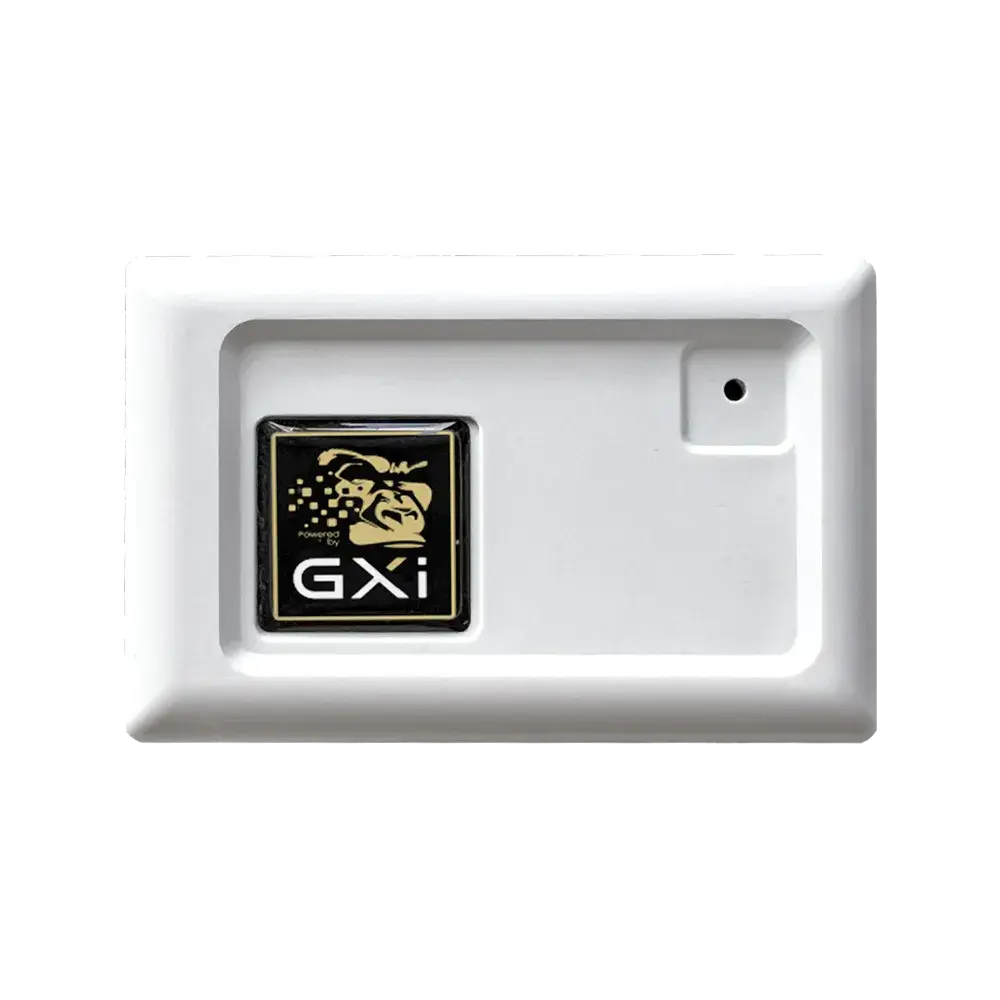
Grow Tent Exhaust Fan: The Complete Guide to Indoor Garden Ventilation
Proper ventilation is one of the most critical aspects of successful indoor gardening. At the heart of any effective ventilation system is a reliable grow tent exhaust fan. These specialized fans do much more than simply move air.
They create the dynamic growing environment that plants need to thrive. When paired with premium equipment like that from Gorilla Grow Tent Fan, they form the backbone of a professional growing operation that delivers exceptional results.
Understanding Grow Tent Exhaust Fans
What Is a Grow Tent Exhaust Fan?
A grow tent exhaust fan is a specialized ventilation device designed to remove warm, humid air from an indoor growing environment. Unlike ordinary household fans, these purpose-built units are engineered to deliver consistent airflow, operate quietly, and withstand the unique conditions of indoor gardens. The primary function is to create negative pressure that draws fresh air into the tent while expelling stale air, controlling temperature, humidity, and providing essential air exchange for plant health.
How Grow Tent Exhaust Fans Work
These specialized ventilation systems operate based on some fundamental principles:
- Air exchange: Removing oxygen-depleted air and bringing in fresh, CO2-rich air
- Heat management: Extracting heat generated by grow lights and equipment
- Humidity control: Removing excess moisture produced by plants and wet growing media
- Negative pressure: Creating a slight vacuum that prevents odors from escaping through unfiltered openings
- Air circulation: Working with intake fans and oscillating fans to maintain consistent air movement
The exhaust fan typically connects to ducting that routes air outside the grow space or through filtration systems before recirculating or releasing it. Most modern systems include speed controllers, allowing growers to adjust airflow rates based on environmental conditions.
Types of Grow Tent Exhaust Fans
The market offers several distinct types of exhaust fans, each with unique advantages:
- Inline duct fans: The most common type, designed to mount directly in ventilation ducting
- Centrifugal fans: Provide higher static pressure for overcoming resistance in long duct runs or filters
- Mixed-flow fans: Hybrid designs that balance airflow, pressure, and noise levels
- EC (electronically commutated) fans: Energy-efficient models with precise speed control
- AC (alternating current) fans: Traditional models that offer reliability at lower price points
Benefits of Quality Exhaust Fans for Grow Tents
Temperature Management
Controlling temperature is critical for plant health and growth:
- Prevents heat stress that can stunt growth or damage plants
- Maintains optimal temperature ranges for specific varieties
- Reduces risk of pest and disease issues that thrive in warm environments
- Creates consistent conditions throughout the growing cycle
- Compensates for heat generated by lighting systems
Humidity Control
Proper exhaust ventilation helps manage moisture levels:
- Reduces excess humidity that can lead to mold, mildew, and rot
- Prevents condensation on tent surfaces and equipment
- Creates appropriate vapor pressure deficit (VPD) for optimal plant transpiration
- Minimizes risk of bud rot in flowering plants
- Helps prevent nutrient lockout caused by improper transpiration
Fresh Air Exchange
Plants require fresh air for several essential processes:
- Replenishes CO2 depleted during photosynthesis
- Prevents stagnant "dead zones" where pests and diseases can develop
- Strengthens plant stems through gentle air movement
- Distributes heat evenly throughout the growing space
- Reduces risk of foliar diseases that thrive in stagnant conditions
Odor Management
For certain crops, controlling aromas is essential:
- Works with carbon filters to neutralize plant odors
- Creates negative pressure that prevents unfiltered air leakage
- Provides controlled airflow for maximum filter effectiveness
- Allows discreet indoor growing in residential settings
- Maintains good relationships with neighbors in multi-unit buildings
Gorilla Grow Tent Fan: Premium Ventilation Solutions
Why Gorilla Grow Tent Fan Stands Above Competitors
Gorilla Grow Tent Fan products represent the pinnacle of indoor garden ventilation technology:
- Superior build quality: Constructed with premium materials that resist wear and corrosion
- Advanced engineering: Designed specifically for the demands of indoor horticulture
- Energy efficiency: Optimized motors that deliver maximum airflow with minimal electricity consumption
- Noise reduction technology: Specially designed to operate quietly without disrupting home environments
- Smart controls: Compatible with environmental controllers for automated operation
- Consistent performance: Engineered for stable operation over extended growing cycles
- Professional-grade components: Commercial quality made accessible to home growers
Key Features of Gorilla Grow Tent Fan Products
What sets Gorilla Grow Tent Fan ventilation systems apart:
- Precision balanced impellers: Minimize vibration for quieter operation and longer motor life
- Multiple speed settings: Adjust airflow to match your specific growing conditions
- Sealed bearings: Protected from moisture and particulates for extended service life
- Temperature-resistant materials: Designed to withstand the heat of intensive growing operations
- Corrosion-resistant construction: Built to last in humid growing environments
- Low-profile designs: Maximizes available growing space in your tent
- Compatibility: Designed to work seamlessly with Gorilla Grow Tent products and accessories
Choosing the Right Exhaust Fan for Your Grow Tent
Calculating Required CFM (Cubic Feet per Minute)
Determining the appropriate fan size involves a simple calculation:
- Calculate the volume of your grow tent (Length × Width × Height = Cubic Feet)
- For basic ventilation, aim to replace all air every 1-3 minutes
- Multiply your grow tent's cubic footage by the desired air exchange rate
- Add 25% if using carbon filtration
- Add another 25% for each 90-degree bend in ducting
- Add 25% if using LED lights or 50% if using HID lighting
Example Calculation:
- 4' × 4' × 7' tent = 112 cubic feet
- For a 1-minute exchange rate: 112 CFM base requirement
- With carbon filter: 112 × 1.25 = 140 CFM
- With two 90° bends: 140 × 1.5 = 210 CFM
- With LED lighting: 210 × 1.25 = 262.5 CFM
This means you would need an exhaust fan rated for at least 263 CFM for optimal performance.
Fan Size and Diameter Considerations
Selecting the appropriate physical dimensions:
- 4-inch fans: Suitable for small tents up to 3' × 3'
- 6-inch fans: Ideal for medium tents from 3' × 3' to 4' × 4'
- 8-inch fans: Recommended for large tents from 4' × 4' to 5' × 5'
- 10-inch and 12-inch fans: Best for extra-large or multiple connected tents
Remember that larger diameter fans often operate more efficiently and quietly than smaller fans pushed to their limits.
Noise Considerations
Minimizing noise disturbance in your growing environment:
- dB ratings: Lower decibel ratings indicate quieter operation
- Fan mounts: Vibration isolation hangers can significantly reduce noise transfer
- Duct mufflers: Acoustic duct silencers can reduce airflow noise
- Fan speed controllers: Running at reduced speeds often lowers noise levels
- Insulated ducting: Reduces noise transmission through vent lines
- Fan placement: Mounting location can impact perceived noise levels
Installing Your Grow Tent Exhaust Fan
Optimal Fan Placement
Strategically positioning your fan for maximum effectiveness:
- Upper tent positioning: Since heat rises, mount exhaust fans near the top of the tent
- Opposite from intake: Position exhaust and intake on opposite sides for cross-flow
- Away from light sources: Avoid direct light exposure that can reduce fan lifespan
- Accessible location: Ensure you can reach the fan for maintenance and adjustments
- Supporting structure: Mount to solid support points that can handle the weight and vibration

Ducting Best Practices
Properly installing ducting to maximize airflow efficiency:
- Minimize bends: Each bend reduces airflow and increases strain on the fan
- Use smooth ducting: Flexible ducting with smooth interior walls reduces resistance
- Short runs: Keep duct lengths as short as practical to minimize resistance
- Proper sealing: Use aluminum tape rather than ordinary duct tape for long-term seals
- Support ducting: Prevent sagging that can create water traps and reduce airflow
- Insulated ducting: Consider insulated options to prevent condensation in cooler environments
Integrating with Carbon Filters
Proper setup for maximum odor control:
- Push vs. pull configuration: Filters can be installed on either side of the fan
- Pull through (filter → fan → ducting): Better for heat-sensitive carbon filters
- Push through (fan → filter → ducting): Often provides better odor control
- Matching sizes: Ensure fan and filter diameter match for proper sealing
- Regular replacement: Carbon filters have a limited lifespan and require periodic replacement
- Pre-filters: Use washable pre-filters to extend carbon filter life
Advanced Ventilation Setups with Gorilla Grow Tent Fan Products
Automated Climate Control
Taking your ventilation system to the next level:
- Environmental controllers: Connect fans to controllers that automatically adjust based on temperature and humidity readings
- Smart plugs and timers: Program fan operation to match specific times in your growing cycle
- Variable speed controllers: Automatically adjust fan speeds based on environmental conditions
- Integrated sensor systems: Use temperature and humidity probes to trigger fan operation
- Day/night settings: Different ventilation needs during light and dark periods
Multiple Fan Configurations
Creating comprehensive ventilation systems:
- Intake and exhaust pairs: Balanced systems that precisely control air exchange rates
- Layered ventilation: Different fans serving different heights in tall grow tents
- Zone-specific ventilation: Targeted airflow for plants with different requirements
- Supplemental circulation: Adding oscillating fans to work with main exhaust systems
- Redundant systems: Backup fans that prevent catastrophic failures during critical growing phases
Maintenance and Troubleshooting Grow Tent Exhaust Fans
Regular Maintenance Schedule
Keeping your ventilation system in peak condition:
- Monthly inspection: Check for dust buildup, unusual noises, or vibrations
- Quarterly cleaning: Remove accumulated dust from fan blades and housing
- Filter replacement: Change pre-filters monthly and carbon filters every 12-18 months
- Bearing lubrication: Apply appropriate lubricant according to manufacturer recommendations
- Electrical safety checks: Inspect wiring and connections for wear or damage
- Duct inspection: Check for leaks, tears, or disconnected sections
Common Issues and Solutions
Addressing typical problems with grow tent ventilation:
- Insufficient airflow: Verify filter condition, check for duct restrictions, confirm fan is properly sized
- Excessive noise: Check for loose mounting, debris in fan, bearing wear, or duct vibration
- Humidity problems: Ensure proper sizing, verify controller function, check for intake restrictions
- Fan not running: Check power connections, controller settings, and motor function
- Short cycling: Evaluate controller settings, sensor placement, and environmental stability
- Condensation issues: Check for insulation problems, cold spots, or improper air circulation
Upgrading Your Grow Tent Ventilation with Gorilla Grow Tent Fan
When to Consider an Upgrade
Signs that it's time to invest in better ventilation:
- Persistent temperature or humidity issues: Despite adjustments, conditions remain suboptimal
- Increasing noise levels: Older fans often become louder as components wear
- Rising energy costs: Newer models often offer better efficiency
- Expanding grow space: Larger areas require more powerful ventilation
- Adding more powerful lighting: Increased heat production necessitates stronger exhaust
- Switching growing styles: Different cultivation methods may require adjusted airflow
Return on Investment Considerations
Understanding the value of premium ventilation:
- Crop quality improvements: Better environmental control typically yields superior results
- Reduced crop loss: Fewer issues with mold, mildew, and environmental stress
- Energy savings: More efficient motors and smart controllers reduce electricity consumption
- Extended equipment life: Proper ventilation protects lights and other equipment from heat damage
- Lower maintenance costs: Quality systems require less frequent repairs and replacement
Conclusion: The Critical Role of Quality Exhaust Fans in Successful Growing
The grow tent exhaust fan represents one of the most crucial investments for any indoor gardener. While lighting often receives more attention, ventilation ultimately determines whether plants will merely survive or truly thrive. By creating the dynamic, fresh environment that plants evolved to prefer, proper ventilation addresses multiple growing challenges simultaneously.
Gorilla Grow Tent Fan products exemplify the importance of quality in this critical component. Their premium construction, advanced engineering, and thoughtful design deliver the consistent performance that serious growers demand. When paired with Gorilla's industry-leading grow tents, these ventilation solutions create indoor growing environments that rival or exceed natural conditions.
Whether you're a hobbyist enjoying the satisfaction of growing indoors or a dedicated enthusiast pursuing perfect results, investing in quality ventilation equipment pays dividends throughout the growing cycle. By understanding the principles of proper ventilation and selecting appropriate equipment, you establish the foundation for growing success that makes all your other efforts more effective.
For those seeking to maximize their indoor growing potential, the combination of a premium Gorilla Grow Tent with matching Gorilla Grow Tent Fan ventilation equipment represents the gold standard in controlled environment agriculture. This powerful pairing delivers the environmental precision that turns growing challenges into consistently successful harvests.

Lena Myles
I'm a mushroom enthusiast and home cook based in Oregon. I'm passionate about foraging and creating fungi-focused recipes, especially delicious, plant-based dishes using gourmet mushrooms like trumpet, shiitake, and oyster. When I’m not in the kitchen, you’ll usually find me wandering the woods in search of new wild flavors.


